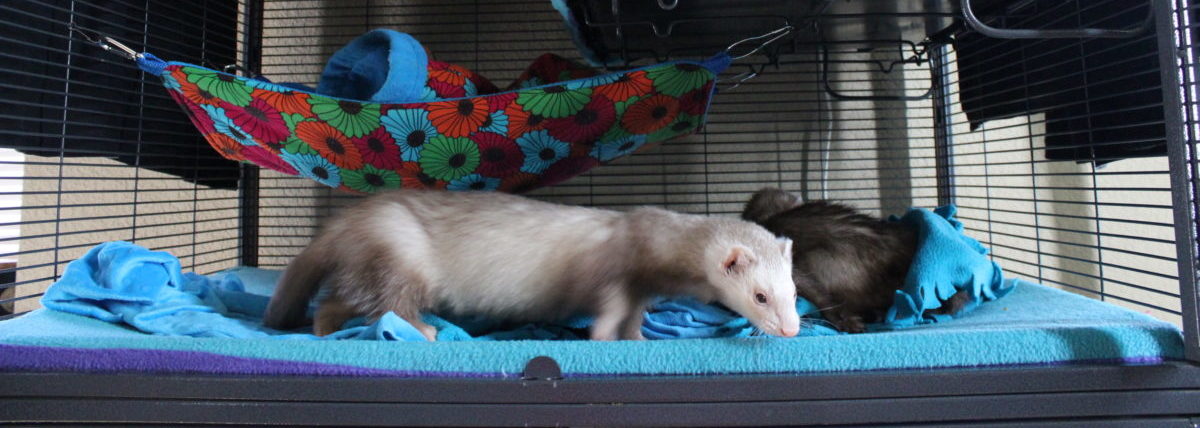Dogs and cats get a lot of attention in our homes and from the manufacturers of pet products. There are many pampered pooches and spoiled kittens. But what about our small furry and scaly friends? They have the same need for a safe, Fear Free Happy Home.
When planning a low-stress Fear Free space for your small pet, here’s some practical advice:
- Learn what your pet needs! Visit local small-animal welfare professionals and your veterinarian to learn what your small pet needs. The habitats you see in pet stores are not always adequately sized or furnished and should not be used as an example of what the pet needs at home. Your local humane society, a highly regarded small-animal rescue, or your veterinarian will know more about the physical and habitat requirements of various rodents, rabbits, ferrets, snakes, lizards, and turtles. Too often, this advice comes too late, after the animal is already sick from stressors caused by an inadequate home environment.
- Predator or prey? If your small pet is a predator, he will have a different outlook on the world than if he is prey. For example, a rabbit can be very fearful of predators in the house such as cats, dogs, and humans. Be sure to provide the prey animal with a safe space where he can hide when frightened, explore without feeling threatened, and be away from loud noises and sudden movements caused by other pets or family members. When considering whether an animal is predator or prey, some will be obvious, and some will be less so. A ferret, for example, is a predator. And whether predator or prey, all animals should have a safe space of their own.
- Design for physical comfort. Just as the pet’s environment should be large enough and supplied properly, it is also important to create a comfortable space for your small pet. All small animals have temperature requirements that are distinct to their species. Reptiles in particular need specific lighting, temperature, and humidity to be healthy. Birds also need to be kept under careful conditions. Wellbeing cannot be fostered in situations where your animal is too cold, too warm, or suffering from another physical problem.
- Include toys and enrichment. Your small pet needs to enjoy life! Find the toys and games that appeal to your friend. Be creative! You may reach out to other small pet owners for ideas. Rodents love tubes for exploring and wheels for running. Hedgehogs love environments with bedding to burrow in. They also love to get out and run and explore in a safe, enclosed area. Fish need structures to swim through and social enrichment from other compatible fish. Reptiles such as geckos enjoy hunting live insect prey and make a game of stalking their food. Ferrets love climbing and need vertical structures in their environments. Imagine the perspective of your pet and experiment with appropriate items that they love to explore.
- Consider lifespan. We strive to eliminate fear, anxiety, and stress for any pet we take into our homes. It’s especially important to consider the pets who live a long time and work harder to make their lives comfortable. As an example, a pet red-eared slider turtle (a common denizen of your local humane society) may live as long as 40 years in captivity. These long-lifespan pets need to have large habitats, numerous types of enrichment, physical comfort, and novelty in their environment and experiences for a humane and well-lived life.
There is no limit to what we can learn about creating a Fear Free Happy Home for all of our pets. Whether you adopt a guinea pig, a turtle, or even a tarantula, each small animal has its own perspective on the world. Learn what your special friend needs and provide it. You will love creating a wonderful life for your pet.
This article was reviewed/edited by board-certified veterinary behaviorist Dr. Kenneth Martin and/or veterinary technician specialist in behavior Debbie Martin, LVT.








